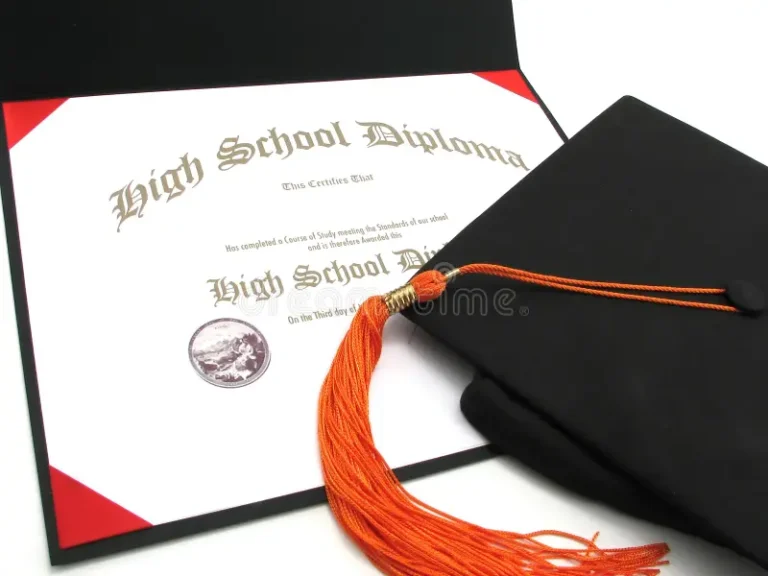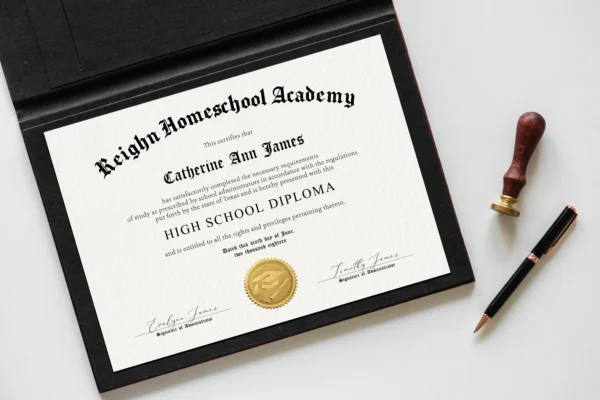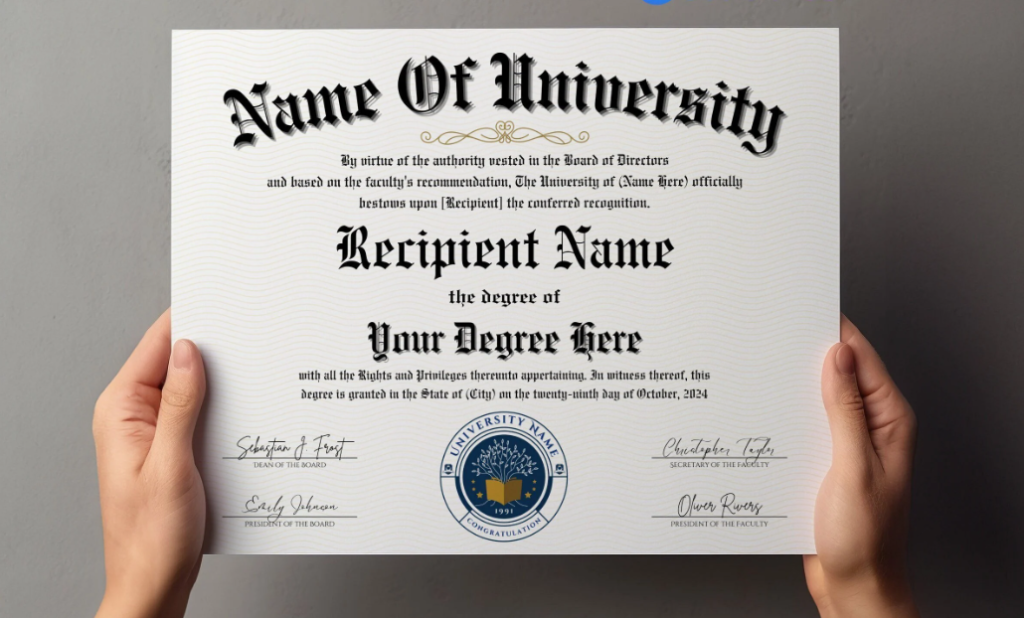The Process of Creating Authentic-Looking Fake Diplomas

26
FEB
The Process of Creating Authentic-Looking Fake Diplomas
Believe it or not, fake diplomas have blown up into a billion-dollar industry, thanks in part to easy access through the internet. There are numerous reasons why people opt for fake diplomas nowadays: rising tuition costs, the feeling of inferiority from people with degrees, losing the original diploma, and much more.
Not only can you get a fake diploma much faster than getting a duplicate from your college, but it is also cheaper. Also, fake diplomas are 100% custom printed and authentic-looking, meaning that you don’t have to worry about someone spotting a mistake.
If you are curious about how we make fake diplomas that look just like the original, this article is just for you. Let’s dive into the process of creating an authentic-looking diploma.
How Authentic-Looking Fake Diplomas Are Made
Creating a fake diploma that looks authentic is a meticulous endeavor that requires a lot of precision. Let’s delve deeper into the various steps involved in creating a fake diploma:
1. Researching Actual Diplomas
The process begins with thorough research into real academic documents. This is done to ensure that the new diploma is a mirror image of the original one so that no one can tell them apart. Every college employs unique design elements for their diplomas to set them apart from others and also help verify them. Some of these elements include:
University logo and seal:
Each educational institution has a unique seal, which is one of the most prominent features of its diploma. The seal gives the document an official and authentic feel and is often one of the hardest things to replicate.
Font and Typography:
One of the biggest giveaways of a poorly designed diploma is the font used, which is also hard to replicate. Not only does the choice of font matter but also its placement. Even a 0.1-inch shift can result in employers or colleges detecting a fake.
Layout and Formatting:
Another crucial design element in a diploma is its layout and formatting. When you get a custom diploma, it has to mirror the placement of the institution name, degree title, student name, and other specifics to the T. Even an untrained eye can tell the difference between an authentic and a fake diploma if the alignment is off.
Paper Quality:
Last but not least, the paper quality plays a crucial role in developing a fake diploma that mirrors the original document. Colleges make use of high-quality paper for printing diplomas, but the exact grade and quality of paper aren’t common knowledge. Therefore, fake diploma creators have to use paper with a similar look and feel.
2. Working on the Design and Layout
Once the research step is complete, fake diploma creators move on to the design process, which involves using various tools and techniques to produce an exact replica of the original diploma offered by a college or university. The smallest details are absolutely crucial in this regard, and here are some of the key steps of this process:
Tools and Software:
Diploma creators use specialized tools and software to carry out the design and layout process. Some of these are design software like Adobe Photoshop and Illustrator, as well as proprietary diploma design tools developed by certain companies. Some diploma creators also offer online tools that offer customizable options, enabling customers to choose different colors, fonts, seals, and other elements.
Replicating Official Seals and Logos:
Logos and official seals are key elements that give diplomas their authenticity. High-quality fake diplomas often replicate university logos and incorporate techniques such as embossing, foil stamping, or even raised ink to match the texture and feel of the real document. Embossing is particularly important, as it mimics the tactile quality that is common on official diplomas. Some fake diploma creators even add holographic stickers or watermarks for extra authenticity.
Matching Fonts and Typography:
Each university or institution typically uses a unique combination of fonts and typography. This includes the font for the institution’s name, the degree title, and other text elements such as student names and graduation dates. Attention to detail is critical here—everything from font size and spacing to kerning must be meticulously matched to ensure that the fake diploma does not raise suspicion.
Layout Precision:
The overall structure and alignment of a diploma are critical to making it look real. This includes ensuring that elements like the student’s name, degree title, institution name, and signatures are perfectly aligned and spaced according to the original document’s specifications. Even small deviations in spacing or text placement can make a diploma look suspicious, so fake diploma creators work hard to get an accurate layout to maintain visual consistency.
Special Paper and Printing Techniques:
To match the look and feel of a real diploma, companies often use high-quality paper that mimics the texture and weight of real diploma paper, commonly referred to as parchment or fine-grade paper. Special printing techniques like letterpress, foil stamping, and embossing give the diploma an official look and help replicate the feel of the original document. Some companies also offer options for glossy finishes or anti-fraud features like microprinting or holographic seals.
Adding graduation dates and degree titles:
Customizing details such as graduation dates, degree titles, and academic honors (e.g., “Cum Laude” or “Magna Cum Laude”) adds another layer of authenticity. These details should be placed precisely where they appear on real diplomas from the specified institution.
3. Printing Using Different Techniques
The printing process is one of the most crucial steps in creating a fake diploma that looks and feels authentic. This stage involves selecting the right materials and using advanced printing methods to replicate the texture, appearance, and professional finish of a real diploma. Here’s how companies achieve this:
Choosing the Right Paper:
Authentic diplomas are usually printed on premium-grade paper, often referred to as parchment or fine-grade paper. This paper has a slightly thicker and more textured feel than regular printer paper, giving it an air of professionalism. To mimic this, fake diploma creators use high-quality, heavy-stock paper that matches the weight, texture, and color of the real thing.
Embossing and foil printing for seals:
To replicate the university seal or stamp, companies use embossing techniques that create a raised, authentic-looking three-dimensional seal. Embossing involves pressing a metal die onto the paper to create a raised design, which not only mimics the feel of real university seals but also adds credibility to the document. In addition to embossing, foil printing is another method used to replicate the gold or silver seals that many universities use.
High-Resolution Printing:
The text, logos, and other design elements on real diplomas are typically crisp, clear, and detailed, which means low-resolution printing will immediately give away a fake. Companies that specialize in creating fake diplomas use advanced printing technology to ensure that every detail is sharp and legible. High-resolution printers are capable of reproducing even the smallest details, such as micro text or fine lines within a logo, ensuring that the final product doesn’t look pixelated or blurred.
Specialty inks and finishes:
To further enhance the authenticity, some companies use specialty inks that match the colors used by real institutions. For example, raised or “puffy” ink can be used to mimic the embossed text often found on diplomas. Some even offer glossy finishes or protective coatings that give the diploma a polished, professional look.
4. Adding Finishing Touches
Signatures and stamps are critical elements in creating a fake diploma that looks authentic and official. They serve as the final touches that give the document an extra layer of credibility. For companies that specialize in creating fake diplomas, replicating these elements accurately is essential to producing a high-quality product.
Creating or Replicating Stamps for an Official Look:
Stamps are another crucial aspect that contributes to the document’s authenticity. Official stamps, such as notary or registrar seals, add a professional and legally binding look to the diploma. To replicate these, companies use specialized embossing tools or digital imaging techniques to create stamps that resemble the real thing.
For instance, rubber stamps, gold foil stickers, and embossed seals are often added to the diploma to make it look like an official document. The addition of these stamps gives the diploma an extra touch of realism, especially when paired with embossed logos or raised ink.
5. Using Further Advanced Techniques
To take the realism of fake diplomas to the next level, advanced techniques are often employed, making the documents almost indistinguishable from the real thing.
Special Inks and Microprinting:
Specialty inks, like UV or heat-sensitive inks, are increasingly being used on diplomas as security measures. Fake diploma makers often use these inks to reproduce the hidden features that can only be seen under certain conditions, adding an extra level of credibility. Microprinting, where tiny text is printed that can only be seen under magnification, is another advanced technique used to enhance realism.
This concludes our guide on the process of creating authentic-looking fake diplomas. We hope you understand how the process works and how you end up with a document that mirrors the original one. Don’t forget to check out our fake diploma services.




